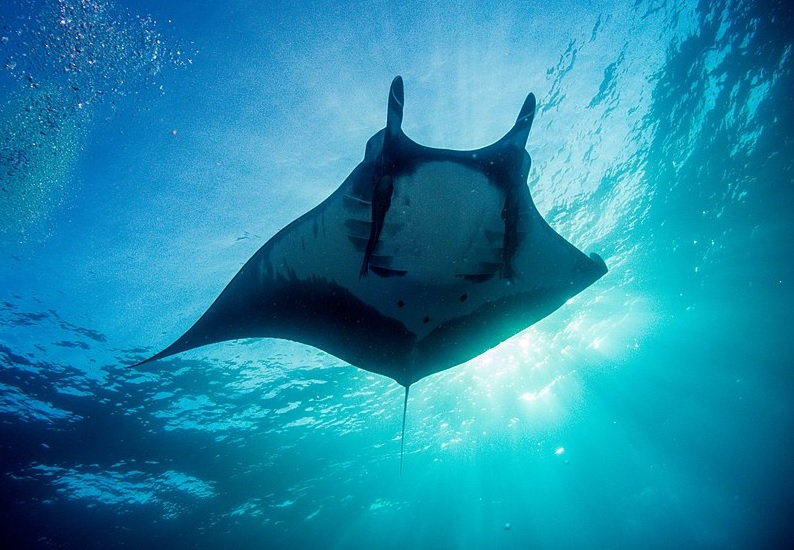
Giant manta rays listed as endangered for the first time
- Thomas Nelson
- December 13, 2020
- Nature, News
- 0 Comments
In a sad milestone for the ocean creature, the giant manta ray has become the first of the manta genus to be listed as endangered. It joins 16,000 other endangered species on the International Union for the Conservation of Nature’s (IUCN) endangered species list. Reef manta ray’s are considered vulnerable with their population decreasing.
“The giant manta ray is a classic example of a species that is quickly succumbing to human-induced pressures,” said Dr. Andrea Marshall, who lead the manta ray’s assessment for the IUCN.
“When we first assessed manta rays in 2003 there simply was not enough information on the species to determine their conservation status and they were listed as ‘Data Deficient’, but on each of the subsequent assessments, their conservation status increased steadily from Near-Threatened, to Vulnerable and now to Endangered.”
What are giant manta rays?
Giant manta rays, sometimes called giant oceanic manta rays, are the largest species of ray in the world. It can be found in tropical and subtropical waters around the world. It is also sometimes found in temperate waters.
Giant manta rays can grow to 23 feet across and weigh 6,600 pounds. Giant oceanic manta rays are also known for their large brains – they have one of the biggest brains of any cold blooded fish. Their brains are 10 times larger than a whale shark. These rays are one of only a handful of animals believed to be able to pass the “mirror test” which is a test of self-awareness.
What threatens manta rays?
Giant manta rays are primarily threatened by human activity.
“Their current status is a direct result of unsustainable pressure from fishing, which now threatens to destabilize their populations across the globe,” said Dr. Marshall.
Giant manta rays are preyed upon by humans for their various body parts, including their gills. Unsustainable fishing is the primary culprit for their declining populations.
How can you help?
There are a few simple things that you can do to help protect giant manta rays and all life in the seas. The easiest thing to do right now is to reduce the amount of plastic pollution you create. Plastics that end up in the sea cause untold devastation to oceanic wildlife.
Reducing the amount of litter and human refuse found on beaches is another great way to help ocean creatures.
In addition to maintaining clean seas, engaging in manta ray tourism may be helpful. Unfortunately, a consistently effective method of protecting endangered species is by proving their economic worth. Swimming with manta rays is a popular tourist activity.
Conversely, swimming with manta rays could do individual rays harm in the long run. If you choose to swim with rays, vet the diving organization you intend to patronize. Ensure that they do not allow or encourage people to “ride” the rays. Riding manta rays can damage a mucus layer that protects them from infection and impede their ability to swim.
Read next: 100 endangered sea turtles hatch due to deserted beaches

